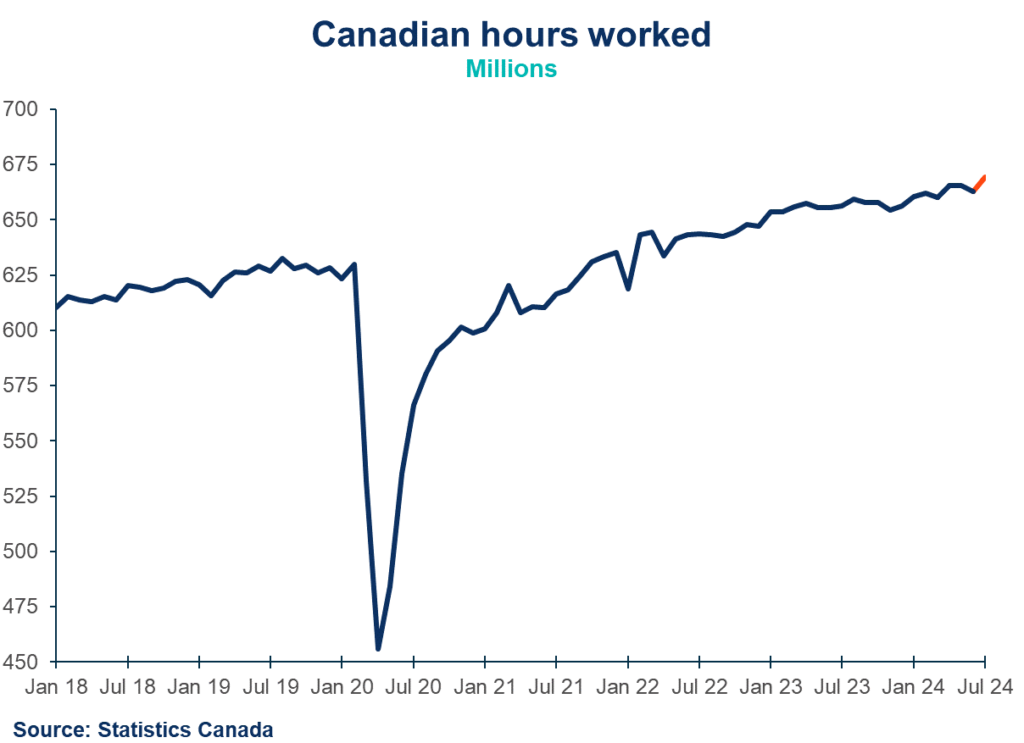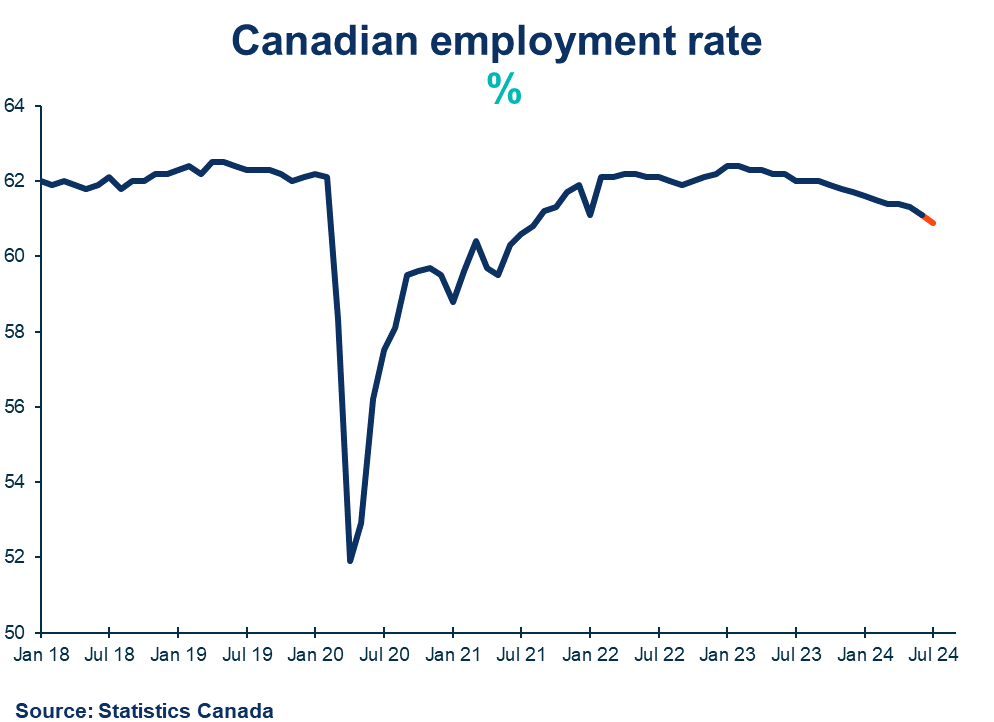Commentaries /
Labour Force Survey July 2024: Unemployment holds steady as job growth stalls
Labour Force Survey July 2024: Unemployment holds steady as job growth stalls
Canada’s July job report offered a brief reprieve from summer’s softening streak as the unemployment rate held steady at 6.4% from June.



Marwa Abdou
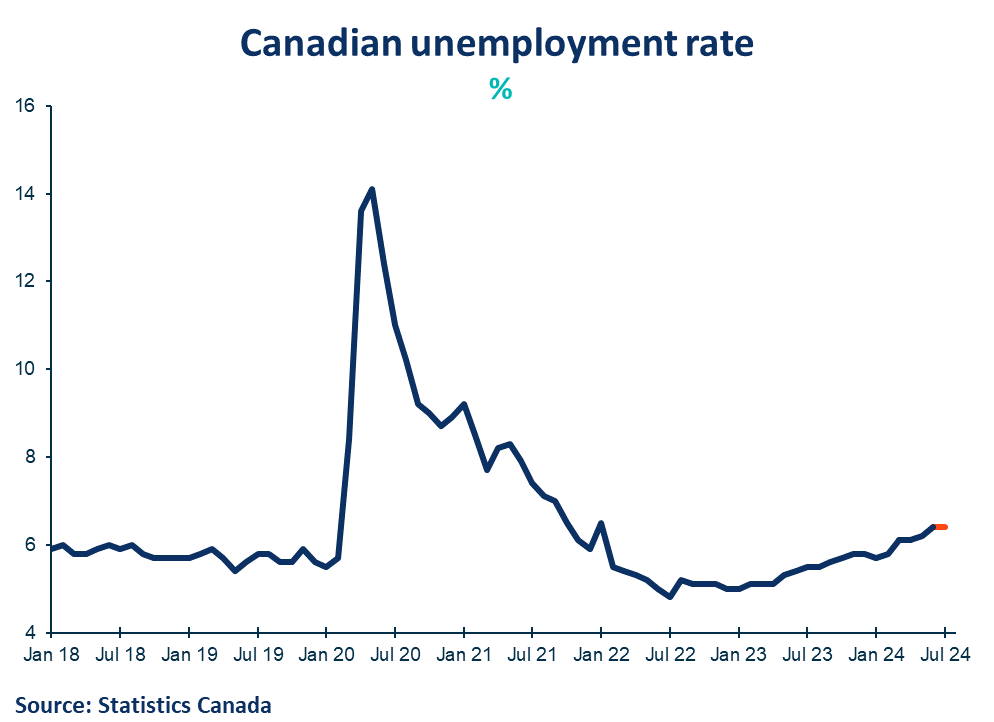
Canada’s July job report offered a brief reprieve from summer’s softening streak as the unemployment rate held steady at 6.4% from June. The BoC’s second interest rate cut last month signalled its focus on growth and concerns around slowed consumer spending. With this month’s data coming in weaker than market expectations, as the pace of employment gains continues to trail behind population growth –the case for further rate reductions remains on track. Still, its likely that wage inflation will be a key sticking point that also tests the Bank’s comfort on the extent of cuts going forward.
KEY TAKEAWAYS
- Canadian unemployment rate was little changed in July (6.4% in June).
- Recent immigrants and youth have been most impacted. For the former, the unemployment rate was 12.6% (up 3.1% from a year prior). For the latter, unemployment (aged 15 to 24) rose to 14.2% (up from 13.5 % in June). This is the highest level since September 2012, excluding the pandemic years.
- July’s employment data held steady for the third consecutive month (-2.8K; -0.0%). The employment rate overall declined in July by 0.2% to 60.9% with declines reported in part-time work (-64K, -1.7%) offsetting an increase in full-time work (+62K, +0.4%). However, the number of part-time jobs created over the last year (+3.4%) has outpaced the number of full-time jobs (1.4%), on a year-over-year basis.
- By sector, job gains were in public administration (+20K; +1.6%), transportation and warehousing (+15K; +1.4%) and utilities (+6.2K; +4.2%). This was offset by declines in wholesale and retail trade (-44K; -1.5%) as well as in finance, insurance, real estate, rental and leasing (-15K; -1.0%).
- Employment declined in Manitoba (-5.4K; -0.8%) and Nova Scotia (-4.8K; -0.9%), while it increased in Ontario (+22K; +0.3%) and Saskatchewan (+6.7K; +1.1%).
- Total hours worked rose 1.0% and were up 1.9% from a year earlier.
- Average hourly wage growth increased 5.2% on a year-over-year basis following June’s figures (5.4%).
SUMMARY TABLE



LABOUR CHARTS
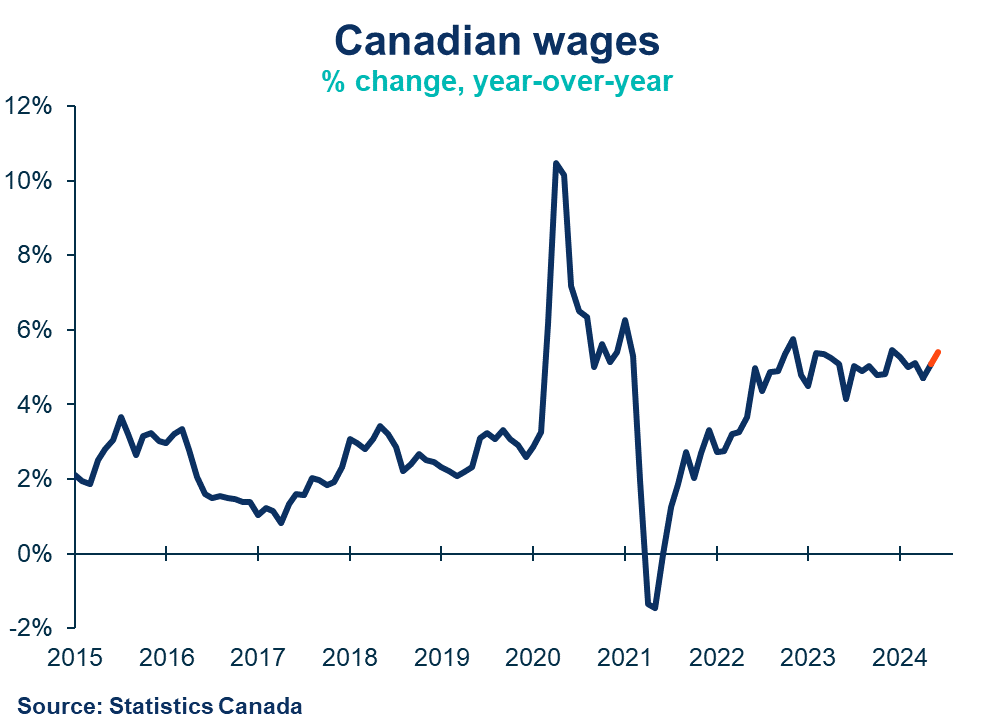
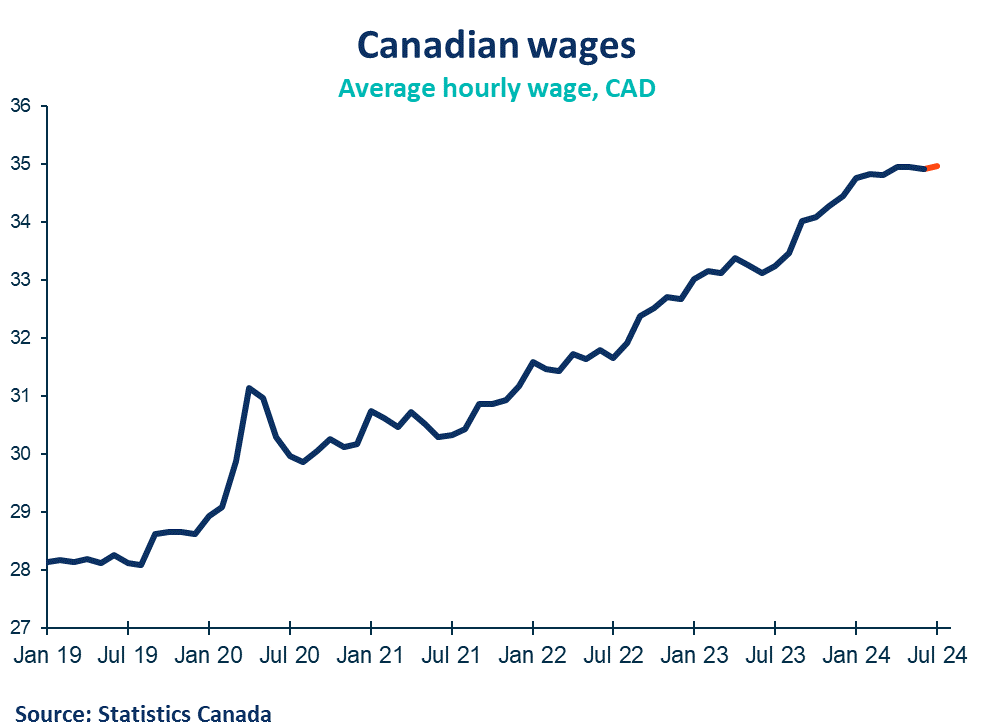
Other Commentaries

Oct 19, 2022
September 2022 Consumer Price Index data: Food and services prices still rising, no progress on core inflation

Sep 20, 2022
August 2022 Consumer Price Index data: Finally some good news on Canadian inflation.

Aug 16, 2022
